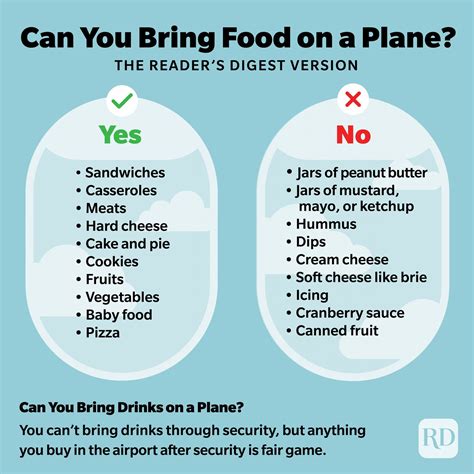Traveling
TSA Food Rules

Introduction to TSA Food Rules
When traveling, one of the most common concerns is what items are allowed in your carry-on or checked luggage, especially when it comes to food. The Transportation Security Administration (TSA) has specific rules and guidelines for transporting food items through security checkpoints. Understanding these rules can help make your travel experience smoother and less stressful. In this article, we will delve into the details of TSA food rules, covering what is allowed, what is not, and how to pack your food items correctly.
Understanding TSA Regulations
The TSA regulates items that can be carried through security checkpoints to ensure the safety of all travelers. These regulations extend to food items, which must comply with specific guidelines to be allowed in carry-on bags or checked luggage. It’s essential to note that while some food items are permitted, their presentation and packaging might affect their approval by TSA officers. For instance, solid food items are generally allowed in reasonable quantities, but liquids, gels, and aerosols are subject to the 3-1-1 rule, which dictates that these items must be in containers of 3.4 ounces or less, fit in a clear quart-sized zip-lock bag, and only one bag is allowed per passenger.
Permitted Food Items
Several types of food are permitted in carry-on bags, including but not limited to: - Baked goods: Cakes, cookies, and pies are allowed. - Fresh fruits and vegetables: Whole, sliced, or in a salad, as long as they are not part of a gel or liquid item. - Meat, seafood, and poultry: These can be carried, but it’s recommended to pack them in ice packs to keep them cool. - Dry goods: Nuts, crackers, and energy bars are acceptable. - Snack foods: Chips, popcorn, and other dry snack foods are permitted.
Prohibited Food Items
While many food items are allowed, there are some that are prohibited or heavily restricted: - Liquids, gels, and aerosols not in compliance with the 3-1-1 rule. - Items that resemble prohibited items, even if they are allowed, might raise concerns and are best avoided. - Large quantities of food that are deemed excessive for personal consumption during the flight.
Packing Food for Travel
To ensure that your food items pass through security without issues: - Pack smart: Use clear bags or containers for items that might raise questions, making it easier for TSA officers to identify them. - Follow the 3-1-1 rule for liquids, gels, and aerosols. - Keep items organized: This helps in quickly identifying what you have and reduces the chance of a detailed search. - Check with your airline: Some airlines have specific rules for food items in checked or carry-on luggage.
Special Considerations
For international flights, consider the destination country’s rules on importing food items. Some countries have strict regulations or bans on certain food products to protect local agriculture and wildlife. Additionally, if you have special dietary needs, it’s crucial to plan ahead and pack accordingly, ensuring you have enough of your required food items for the duration of your trip.
Table of Allowed and Prohibited Items
| Item | Allowed in Carry-on | Allowed in Checked Luggage |
|---|---|---|
| Solid foods (e.g., sandwiches, fruits) | Yes | Yes |
| Liquids, gels, aerosols (in compliance with 3-1-1 rule) | Yes | Yes |
| Liquids, gels, aerosols (not in compliance with 3-1-1 rule) | No | Yes |
| Meat, seafood, poultry | Yes | Yes |
📝 Note: Always check the TSA's official website for the most current information, as rules and regulations can change.
In summary, understanding and complying with TSA food rules can make your travel experience much more enjoyable. By knowing what food items are allowed, how to pack them, and considering special circumstances, you can avoid unnecessary delays at security checkpoints and ensure you have your preferred snacks during your journey. Whether you’re traveling domestically or internationally, being prepared and informed is key to a hassle-free trip.